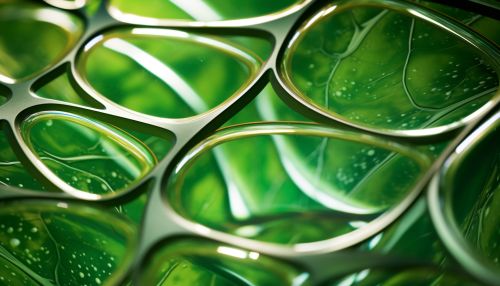Plastids
Introduction
Plastids are a group of organelles found in the cells of plants and algae. They are critical for various functions, including photosynthesis, storage of products like starch, and the synthesis of many types of molecules that are important for the plant as a whole. Plastids are surrounded by a double membrane and have their own DNA, similar to mitochondria.


Classification
Plastids are classified into three main types based on their function and the pigments they contain. These are chloroplasts, chromoplasts, and leucoplasts.
Chloroplasts
Chloroplasts are perhaps the most well-known type of plastid. They are responsible for photosynthesis, the process by which light energy is converted into chemical energy in plants. Chloroplasts contain the pigment chlorophyll, which gives plants their green color.
Chromoplasts
Chromoplasts are plastids that contain colorful pigments and are responsible for the red, yellow, and orange colors seen in things like flowers, fruits, and autumn leaves. These plastids are usually found in cells exposed to the sun, where they can absorb and disperse light, helping to attract pollinators to flowers or seed dispersers to fruits.
Leucoplasts
Leucoplasts are colorless plastids that are primarily involved in the synthesis and storage of food. There are several types of leucoplasts, including amyloplasts (which store starch), elaioplasts (which store fat), and proteinoplasts (which store protein).
Development and Differentiation
Plastids have the ability to differentiate, or change from one type to another, depending on the needs of the cell or signals from the environment. This is known as plastid differentiation or plastid interconversion. For example, a proplastid in a young leaf cell may develop into a chloroplast as the leaf matures and begins to photosynthesize, while in a ripening fruit, chloroplasts may change into chromoplasts.
Plastid DNA and Replication
Like mitochondria, plastids have their own DNA, separate from the nuclear DNA of the cell. This DNA, known as plastome, is circular and smaller than nuclear DNA. It encodes a number of proteins necessary for plastid function, although many proteins found in plastids are encoded by nuclear DNA and imported into the plastid.
Plastids divide by binary fission, a process similar to bacterial cell division. This allows them to increase in number independently of the cell cycle.
Role in Plant Physiology
Plastids play a crucial role in plant physiology. They are not only the site of photosynthesis, but also contribute to a variety of other metabolic pathways. For example, they are involved in the synthesis of fatty acids, amino acids, and tetrapyrroles (which include chlorophyll and heme). Plastids also play a role in the plant's response to environmental stress, such as drought or high salinity.
Plastids in Biotechnology
Due to their unique properties, plastids have been used in biotechnology for the production of high-value compounds, such as pharmaceuticals and biofuels. This is known as plastid engineering or chloroplast transformation. The fact that plastids have their own DNA that can be manipulated independently of the nuclear DNA is one of the reasons they are attractive targets for genetic engineering.
